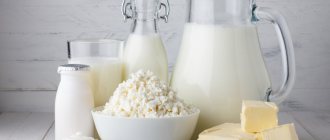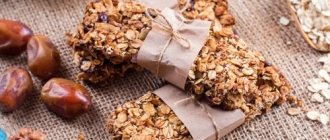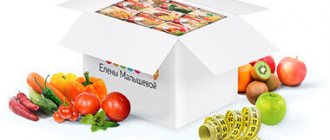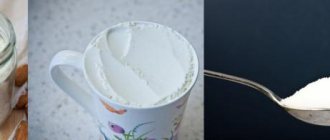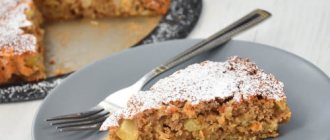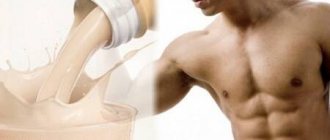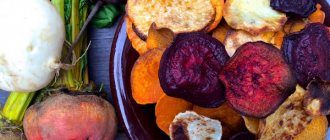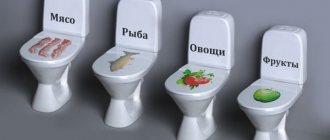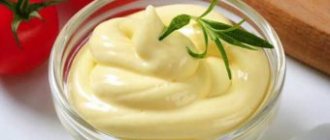Every day in the kitchen we prepare everyday dishes and don’t even think about the correct proportion of ingredients, but as soon as we decide to try a new recipe, everything becomes much more complicated. In order to obtain exactly the taste and consistency described in the recommendations, it is necessary to cook strictly observing the weight and ratio of each ingredient. It is at this moment that the question often becomes relevant: how to weigh food without scales at home? Kitchen scales are a very convenient thing, but not every home has one, so housewives often have to use certain tricks to determine the weight of ingredients for a recipe.
Important information
Every kitchen must have a glass, a teaspoon and a tablespoon. It is with their help that you most often have to measure products. It is only important to know the volume of the glass in advance, since they come in 200 or 250 ml. New dishes, as a rule, are larger in size, and the cut glass known for generations holds strictly 200 ml up to the rim.
How to weigh food without scales using spoons? In this case, liquids should be poured strictly to the brim, viscous products should be collected with a “slide”, and bulk products should be collected with a slight top. The standard weights given below apply only to those dry substances that are placed loosely in spoons and glasses, without compaction.
It should also be remembered that cereals and any bulk materials must be dry before weighing. Vegetables - washed and peeled, also chopped, and if necessary, measure out an amount equal to pieces. The same recommendations apply to fruits. Before weighing meat without a scale, the product should not be washed so that it does not become saturated with water. If the recipe uses only pulp, without fat and bones, then you only need to weigh it, after first separating the desired piece, washing it and blotting it with a napkin.
We measure products correctly
How to use home weights correctly? For liquid products, containers should be filled to the limit, that is, to the very brim. It is more convenient to apply viscous and thick mixtures (honey, jam, sour cream) with a spoon, making sure that the glass is completely filled. Fill containers with loose and viscous products with a heap, and do not scoop flour and starch directly from a bag or bag, but pour it with a spoon so that voids do not form. There is no need to shake, loosen or compact the food, and if you need to sift the flour, do it after measuring. The fact is that when sifting, the flour becomes more voluminous, which means its weight will change. For comparison, a thin glass contains 160g of flour when filled correctly, 210g of tamped flour and 125g of sifted flour. Changing the characteristics of products also affects their weight - for example, an increase in humidity makes salt, sugar and flour heavier, and fermented sour cream is lighter than fresh.
The secret to high volume
If the weight of liquids and bulk ingredients can be easily determined using spoons or a glass, then how to weigh large products without scales remains a question. In this case, measuring containers should be used in pots or bowls, the volume of which is known and measured in liters.
Having tightly packed the necessary ingredients into them, you can approximately determine their weight by comparing them with the volume of the container.
If a more accurate measurement is needed, then you should prepare 2 pans of such a size that one fits freely into the other. Fill a large container with water and place it in the sink. Pour exactly a kilogram of sugar, salt or another product that is in the kitchen in the exact weight into a smaller pan. Now you need to lower the small container into the larger one so that the water from the lower pan reaches the edges of the upper one. So how to weigh food without scales using scrap materials and what does sugar have to do with it? Now you should pour it out, place what you actually need to weigh into a small container, and also lower it into a pan with the same water. As soon as the liquid reaches the edges, there is exactly a kilogram of the required product in the upper container.
How to measure honey weight correctly
To weigh bee products in the kitchen, you will need a household culinary scale - this is the most accurate way, but not every household has a smart device. Standard kitchen containers will help you determine the approximate amount of treats: cutlery of different sizes, a glass, a jar (half-liter and liter).
When measuring the required amount of sweetness, consider the following nuances:
- the container has its own weight;
- a certain amount of product remains on the surface of the measuring spoon or glass - take it “with a reserve”;
- Sugaring is burdensome: the thicker and denser the structure of the product, the more it will fit into the measuring container.
Volume of liquids
In this case, weighing is not even required, since all pouring ingredients are indicated in recipes in milliliters, not grams. To determine their required volume, you will need a measuring cup. If you can’t find it in the kitchen, then an ordinary faceted one, a tablespoon or a teaspoon for small scales, will do.
It is important to remember that the same volume of different liquids will always weigh differently. For example, a glass of water will always contain as many milliliters as corresponds to its volume, but there will always be less vegetable oil, since its density is less.
Foreign weight measures
If you like to cook according to foreign recipes, you may encounter unfamiliar weight measures, so this information will be useful in the kitchen. The American cup is our thin glass, that is, 250 g, and the English cup corresponds to 280 g. A pint is 470 g, an ounce is 30 g, and a quart “weighs” 950 g.
They say that the secret to culinary excellence is inspiration and precision, so the correct dosage of ingredients is half the battle. If you want to make your life easier and minimize complex arithmetic, buy a universal 500 ml measuring cup with divisions for liquid and bulk products. Delight your loved ones with delicious food and enjoy it yourself!
In many situations, when preparing dishes according to a recipe, you will need to know the weight of honey. It can be measured with a faceted glass and an ordinary thin (tea) glass. Honey is most often used in baking pastries and making cakes. It is very easy and convenient to measure honey using glasses. Especially if you don’t have measuring scales in your kitchen. In this article we will answer the question how many grams of honey are in a glass. Please note that the volume of glasses is different, there are 200 ml. and 250 ml. We have a very good measurement chart in our knowledge base that lists popular food weights. To find out what units liquids are measured in, see our table of liquids.
Approximate Standards
If you don’t have time to delve into such nuances, you can follow approximate recommendations on how to weigh food without scales. According to them, a teaspoon contains 5 g of liquids, 4 g of cereals, 10 g of salt or sugar and 3 g of flour. A tablespoon holds 20 g of liquids, the same amount of cereals, 15 g of salt or sugar and 25 g of flour. This applies only to a spoon with a medium heap, and if, when scooping up loose ingredients, the excess easily rolls off on its own, then with flour it is more difficult. You can also fill a spoon with a heap of 5-7 cm, since its powdery consistency simply will not allow the compacted product to fall out. Having collected this amount, you should understand that the flour will weigh 35-40 g.
In a standard glass of water or milk there will be 200 grams, vegetable oil 250 grams, cereals and other bulk grains - 200 grams, and flour to the rim - 180 grams.
How many grams of honey are in a faceted glass and a tea glass?
| Cup | To the brim | To the edge |
| Faceted | 320 grams of honey | 260 grams of honey |
| Regular tea | 320 grams of honey |
Attention! So the density of honey varies greatly depending on its condition. It is important to know that the measurements were taken when the honey was in a liquid state. Honey in a different form will weigh more. Because its density is completely different. The approximate density of honey in the solid state can vary from 320 to 370 grams per 250 ml. glass.
The weight of honey in a regular glass is 320 grams
The weight of honey in a faceted glass is 320 grams to the brim and 260 grams to the rim
Of course, if you are going to measure the amount of honey in glasses, it doesn’t matter whether they are faceted or regular. It is worth measuring the first glass with measuring scales. Well, then find out how much one glass of your honey weighs. All other glasses will weigh the same. Using this method, your calculations will be perfectly correct.
To measure out large amounts of honey, it is better to use a teaspoon or a tablespoon. You can find out by reading our article, how many grams of honey are in a spoon? We hope that our article helped you, and we answered your question. If you liked our site, please add it to your browser bookmarks and share the site with your friends on social networks. In this way you will help our project.
Vegetable weight determination
Sometimes all the above recommendations do not help to approximately weigh food without scales. How can vegetables be placed in a glass or pan? After all, empty space will certainly form between them, distorting the final result. To determine the weight of such products, a standard for their gramming per piece is often used. So, a head of white cabbage weighs on average 1.1-1.5 kg, although in the cold season you can also find heads weighing 4-5 kg on the shelves. One potato tuber takes on average 100 g, onion - 70 g, carrots - 75 g, beets - 100-150 g, tomato - 75-100 g, cucumber 50-100 g, eggplant - 150-200 g, celery root - 40 -60 g, cauliflower – 800 g, radish – 70-100 g, parsley root – 50 g.
Standards for fruits and berries
Recommendations on how to weigh food without scales at home contain approximate values for popular berries and fruits. So:
- medium apple – 100-150 g;
- pear – 120-150 g;
- quince – 150-200 g;
- banana – 100-200 g;
- orange – 100-150 g;
- lemon – up to 100 g;
- figs – 40 g;
- plum – 30 g;
- apricot – 20-30 g.
As for berries, it is better to measure their weight with a glass or spoon. A standard 200 ml glass container will fit:
- strawberries – 120 g;
- raspberries – 150 g;
- cherries or sweet cherries – 130 g;
- blueberries – 160 g;
- blackberries – 150 g;
- cranberries – 120 g;
- blueberries – 160 g;
- lingonberries – 110 g;
- currants – 120-140 g;
- mulberries – 150 g;
- gooseberries – 170 g.
What to replace
If you don't have a tea and cut glass, take any container, measure its volume using an accurate kitchen scale and mark a line where the volume is 200 or 250 ml. For culinary purposes, you can also use standard plastic cups with a capacity of 200 ml. Usually in recipes, instead of the phrase “tea glass,” they simply write “glass” or “cup,” which means 250 ml. If a cut glass serves as a measure of weight, then this will certainly be indicated in the recipe.
Liquids and viscous products
How to weigh products that can completely fill the container space without scales? This shouldn't cause any problems at all. Measuring containers, spoons or glasses are used. A teaspoon contains:
- 5 g of water, vinegar, cream, milk, any juice and melted butter;
- 3 g vegetable oil;
- 4 g melted margarine;
- 7 g berry puree or liqueur;
- 8 g tomato sauce;
- 9 g liquid honey;
- 10 g sour cream, tomato paste;
- 12 g condensed milk or jam;
- 15 g jam;
- 20 g honey or jam.
The same products in the same order will take up 18 g, 20 g, 15 g, 20 g, 25 g, 30 g, 25 g, 30 g, 40 g and 45 g in a tablespoon, respectively. It is noticeable that even the same The weight of the products in the new container is no longer ascending. A similar situation arises with measurements in glasses, so it is impossible to calculate exactly how many grams there will be in a large container based on the data from teaspoons; the result will only be approximate.
So, in a faceted glass, the total volume up to the rim is 200 ml and it will be filled with exactly water, milk, cream, vinegar and juice. Sour cream in the same container will already be 210 g. Vegetable oil, melted margarine or butter - 180-190 g, tomato sauce - 180 g, jam - 185 g, melted fat - 245 g, jam - 280 g, berry puree - 300 g, and honey - 330 g.
How many grams of honey in a teaspoon
This elegant cutlery is used to sweeten a drink, fruit salad or hot pancakes with honey. No one will waste time weighing a small amount of treat on a scale, so the contents are simply sent to a plate or cup.
Meanwhile, a spoon may contain a very different amount of product. You should not write down the standard “5 grams” in your food diary: this does not always correspond to the real state of things.
The device is different. If you inspect the kitchen drawer, you will notice that there are smaller spoons, and there are more spacious ones. When measuring sweetness, consider the capacity of the device. So, how many grams of honey are in a heaped teaspoon?
Content of honey in 1 teaspoon
| heaped teaspoon | level teaspoon | |||||
| liquid | candied | thick | liquid | candied | thick | |
| weight, gram | 6,5–11 | 15–20 | 10–20 | 5–8 | 10–15 | 8–12 |
You can analyze the amount of treats based on the required mass of the product:
| Weight, gram | Ratio in teaspoons |
| 5 grams | 1 (thin, without top) |
| 0.5 (thick, without slide) | |
| 10 | 1 (thick, heaped) |
| 15 | 2 (fluid, with top) |
| 20 | 2–3 (dense, without slide) |
| 25 | 2 (candied, full) |
| 3 (thick, with a slide) | |
| 30 | 1.5 (candied, with top) |
| 3 (thick, with top) | |
| 4–5 (flowing, with a slide) |
Bulk
For cereals and other products, there are also certain scales according to the volume of containers used for measuring.
A teaspoon contains 10 g of salt, sugar, egg powder, starch and flour. In the same spoon you can measure 7 g of coffee or citric acid, 9 g of cocoa, 12 g of baking soda, 5 g of dry gelatin or poppy seeds.
A tablespoon will accordingly measure the weight of the same foods in the same order: 30 g, 25 g, 25 g, 30 g, 30 g, 20 g, 25 g, 28 g, 15 g and 18 g.
Cereals, as a rule, occupy 4 grams in a teaspoon, 20-25 g in a tablespoon, and 150-170 g in a glass.
In general, a glass of 200 g can hold only 150 g of salt and starch, 180 g of sugar, 135 g of poppy seeds, 140 g of ground nuts, and 160 g of powdered sugar.
How many grams of honey in a tablespoon
The api product is often measured out with large spoons for culinary needs: recipes contain quite an impressive amount of the ingredient, and it is inconvenient to operate a small device. How to find out how many grams are in a tablespoon of honey (candied)?
Honey contains many antioxidants such as phenolic acids and flavonoids. They protect the body from the action of free radicals that destroy cells, and thereby prevent the development of cancer, diabetes and cardiovascular diseases.
Honey content in 1 tablespoon
| heaped tablespoon | level tablespoon | |||||
| liquid | candied | thick | liquid | candied | thick | |
| weight, gram | 25–30 | 30–40 | 30–35 | 20–25 | 25–35 | 25–30 |
Products for diet
A very pressing question is how to weigh foods without scales for a diet. In order to correctly calculate the calories consumed, they have to determine the weight of not only raw materials, but also already prepared dishes or products that are immediately ready for consumption. Having allowed yourself to snack on packaged cookies, you can easily calculate the weight of one treat by dividing the total weight of the pack by the number of cookies. The average weight of marshmallows is 42 g, marmalade 20 g, gingerbread 30 g, and biscuit cookies 10 g. A slice of bread takes on average 20 g, a slice will be heavier and weighs approximately 50-80 g.
Store-bought buns are always labeled and do not need to be weighed. A circle of sausage weighs on average 5 g, a finished cutlet weighs 80-100 g, and a chop weighs 200 g.
It must be remembered that when cooked, cereals increase in volume depending on the addition of water, pasta - 2 times, meat, on the contrary, decreases by approximately 50%. And in fact, it’s not difficult to weigh food without scales. Cottage cheese as an immediately ready-to-eat product can be measured in a glass. In a faceted container it will take no more than 130 g, depending on the fat content. Dried fruits and other dietary sweets should also be measured in glasses. It will contain 130 g of raisins and 50 g of dried fruit.
A medium-sized chicken egg without a shell weighs 40 g, and a large one weighs 60 g. If you need to eat the yolk and white separately, you need to remember that depending on the size of the egg itself, the weight of only the white changes. It can be 20-40 g, and the yolk always weighs 20 g.
